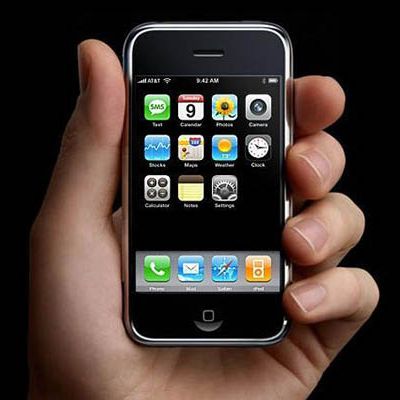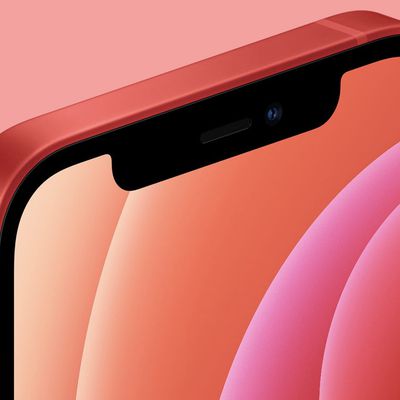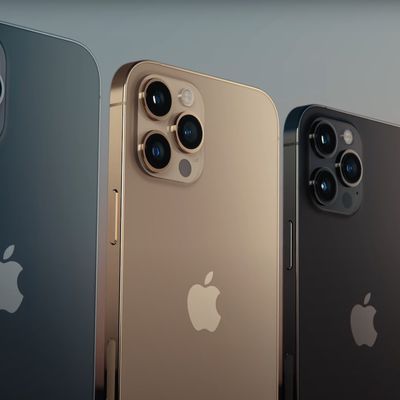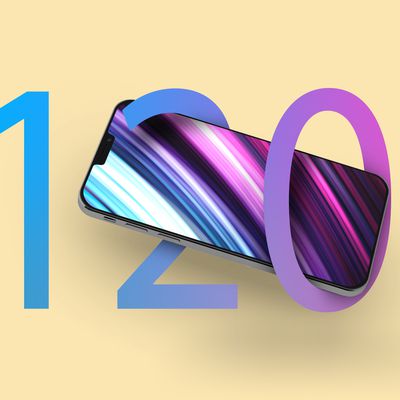In 2007, Apple launched the original iPhone, kickstarting the modern smartphone era which is now dominated by iPhone and Android devices. We've had 18 generations of iPhones so far, with the latest models, the iPhone 16, iPhone 16 Plus, iPhone 16 Pro and iPhone 16 Pro Max, introduced in September 2024, and the iPhone 16e released in February 2025. Apple follows an annual update cycle, introducing new flagship models while discounting prior-year models and selling them at more affordable price points.

iPhone vs Android
Over the years, Android and iPhone smartphones have evolved to the point where feature-wise, they're similar in function and capability. Android smartphones are made by multiple manufacturers, but the core operating system is provided by Google, which leads to a wider variety of phones and price points to choose from, but weaker integration between software and hardware.

Apple's control of both the iPhone and the operating system (iOS) provides a more consistent experience along with ongoing support. With iOS 18, Apple supports all iPhones that were introduced in the last four years, so the majority of active iPhone owners can and do upgrade to the newest version of iOS that Apple rolls out each year.
Android updates are often more inconsistent and often don't make it to all Android-based smartphones because each manufacturer has to implement support on an individual basis. So while Google also does yearly Android updates, the reality is that a lot of older Android smartphones don't get the new software.
With Apple's control and curation of the iPhone experience, the iPhone is largely considered to be the more secure platform, and Apple has made it a point to focus heavily on privacy. Apple's iOS is less customizable than Android, though, so for individuals who prefer flexibility and customization options, the Android operating system may be worth looking at.
How Do iPhone Updates Work?
Here are the basics you should know about how Apple updates the iPhone and the iOS operating system.
Each fall, typically in September, Apple releases a new series of flagship smartphones. These often come at high prices and feature the latest technologies, with Apple offering high-end models and still high-end but more affordable models. Prior-year iPhones often stick around with lower price points as cheaper alternatives to the latest and greatest technology, and occasionally, Apple launches a lower-cost iPhone outside of the normal fall timeline.
At the current time, Apple's iPhone lineup includes the iPhone 15 (2023), iPhone 15 Plus (2023), iPhone 16 (2024), iPhone 16 Plus (2024), iPhone 16 Pro (2024), iPhone 16 Pro Max (2024), and iPhone 16e (2025).
Apple also debuts an updated version of iOS at the same time that new iPhones launch, but new versions of iOS are pre-introduced every year at Apple's annual Worldwide Developers Conference to give developers time to incorporate new features and technologies into their apps ahead of when the software becomes available to the public. The current iPhones run iOS 18.
In this guide, we go over all of the iPhones that are in the current Apple lineup, offer up some buying suggestions, and provide tips and resources for both new and existing iPhone owners.
iPhone 16 Pro and iPhone 16 Pro Max ($999+)

The iPhone 16 Pro and iPhone 16 Pro Max are Apple's current high-end flagship devices with all of the top-of-the-line features and the most bells and whistles. The Pro models are for those who want to get the most out of their iPhones with the latest feature set.
Pricing on the iPhone 16 Pro starts at $999, while pricing on the iPhone 16 Pro Max starts at $1,199. The two iPhones are nearly identical when it comes to feature set, and it's only display size and battery capacity that set the two devices apart.
Apple introduced larger screen sizes and slimmed down bezels for the Pro lineup in 2024, so the iPhone 16 Pro Max has a larger 6.9-inch display (up from 6.7 inches), and the iPhone 16 Pro has a 6.3 inch display (up from 6.1 inches). Both models feature the same design with a glass front and back, a lightweight but durable titanium frame, and squircle edges. Colors this year include natural titanium, white titanium, black titanium, and desert titanium, which is a shade of gold.
The iPhone 16 Pro and Pro Max feature edge-to-edge OLED displays with the slimmest bezels we've seen in an iPhone to date. There's a second-generation "Ceramic Shield" that offers superior scratch resistance, and a pill-shaped Dynamic Island continues to house the front-facing camera and hardware used for Face ID authentication.
The customizable Action button is still available, and it now does more thanks to Control Center integration. This year, Apple also added a Camera Control button that can be used to activate the camera with a press. Camera Control makes it quicker to capture photos and videos, and it is also pressure and touch sensitive so you can change controls and adjust settings without touching the screen.
The Dynamic Island has been incorporated into the iPhone's interface and it is able to show various notifications and app information for phone calls, timers, Face ID, Bluetooth connections, and more.
Apple added a new A18 Pro chip to the iPhone 16 Pro and Pro Max, with a 6-core CPU, a 6-core GPU, and a 16-core Neural Engine. It is up to 20 percent faster than the A17 Pro from the iPhone 15 Pro models, and it is the fastest iPhone for Apple Intelligence.
There continues to be a three-lens camera setup with a 48-megapixel Main camera that offers improved low-light performance, a 12-megapixel 5x Telephoto lens, and a new 48-megapixel Ultra Wide camera. The 5x Telephoto is available for both Pro models, which is new this year, and the 48-megapixel Ultra Wide camera takes improved wide-angle and macro shots when lighting is poor.
Crash Detection is able to determine if you've been in a serious car accident, alerting emergency services, and there's also an Emergency SOS via satellite feature for getting help if you're out of range of Wi-Fi and cellular. With iOS 18, the satellite connectivity can be used to send messages too.
Both iPhone 16 Pro models offer improvements to battery life, and they have a USB-C port and support for up to 25W MagSafe charging.
Other features include IP68 water resistance, 8GB RAM, ProMotion 120Hz refresh rate for the display, faster 5G, a second-generation Ultra Wideband chip, faster USB-C charging, and Wi-Fi 7.
Key Features:
- Highest end, highest price
- Triple-lens camera: Main (Wide), Ultra Wide, and Telephoto (5x for the Max)
- 48-megapixel Main lens with ProRAW support
- 48-megapixel Ultra Wide lens with macro capability
- Camera Control button
- A18 Pro chip
- Action button
- Always-On Display
- Titanium frame
Bottom Line: The iPhone 16 Pro and iPhone 16 Pro Max are the iPhones to choose if you want the absolute best camera capabilities that you can get in an iPhone, with the Pro Max being the top-of-the-line model due to its increased display size, and longer battery life. In terms of performance, there isn't much of a difference between the iPhone 16 Pro models and the standard iPhone 16 models, with screen size, display quality, and chassis material differentiating the two iPhone lines.
iPhone 16 and iPhone 16 Plus ($799+)

Sold alongside the iPhone 16 Pro and iPhone 16 Pro Max, the iPhone 16 and iPhone 16 Plus are Apple's more affordable flagship devices. The iPhone 16 and 16 Plus feature many of the same capabilities as the Pro models, but they are missing some of the higher-end features to keep the price lower. The 6.1-inch iPhone 16 is priced starting at $799, while the 6.7-inch iPhone 16 Plus is priced starting at $899.
Despite the difference in screen size, the iPhone 16 and 16 Plus are essentially identical, featuring a flat-edged design with a glass body and an aluminum frame. They do not offer ProMotion display technology and thus do not support an always-on display, but they do have the same Dynamic Island, front-facing camera, and Face ID authentication functionality.
Apple brought the Action button to the iPhone 16 lineup this year, so that is no longer a Pro-only feature. The Action button replaces the Ring/Silent switch, and it is customizable, so you can set it to bring up whatever is most convenient for you. It can mute/unmute your iPhone, activate the flashlight, open a favorite app, activate a Control Center control, turn on a Focus mode, and more.
Like the iPhone 16 Pro models, the iPhone 16 and iPhone 16 Plus have a new Camera Control button below the power button. Pressing the button activates the camera, and a double press snaps a photo, so it makes it much quicker to get the shot that you want. The button is capacitive and pressure sensitive, so it can be used for changing various camera settings and swapping between tools. It works much like a DSLR shutter for autofocus with a half press, and you can adjust exposure, style, zoom, aperture, and more without ever touching the iPhone's display.
While the iPhone 16 Pro models have an A18 Pro chip, the iPhone 16 models have an almost-as-capable A18 chip that also works with Apple Intelligence. The A18 has the same 6-core CPU and 16-core Neural Engine, but it has a 5-core GPU instead of a 6-core GPU. The chip is built using the same 3-nanometer technology, and it enables support for ray tracing and console-quality games, a feature that was previously limited to the Pro models. Battery life has improved compared to the prior iPhone 15 models thanks to the new chip technology.
There is a dual camera system that features 12-megapixel Ultra Wide and 48-megapixel Fusion (Wide) lenses with no Telephoto lens. The primary camera can be cropped in to a 2x zoom, so 0.5, 1x, and 2x options are supported. Some of the same photography and videography capabilities that are in the Pro models are also in the standard iPhone 16 models, including the new Photographic Styles for customizing your images and Audio Mix for adjusting the sound in your videos, plus support for shooting spatial videos and images.
Capturing video in 4K at 120 frames per second is a Pro-only feature, as is support for shooting in ProRAW and ProRes, so if those are capabilities you need, you'll want to look at the Pro models.
The iPhone 16 models have support for mmWave (U.S. only) and Sub-6GHz 5G, and they also have a USB-C port and offer MagSafe charging at up to 25W, a new, faster speed this year. Crash Detection, Emergency SOS via satellite, and Messages via satellite are available as well. Compared to the Pro models, the standard models lack the titanium chassis, the Telephoto camera lens, and the A18 Pro chip.
Key Features:
- Dual-lens camera: Fusion (Wide), Ultra Wide
- Crash Detection
- USB-C port
- Action button
- Camera Control
- A18 chip
Bottom Line: The iPhone 16 and 16 Plus offer many of the same features as the iPhone 16 Pro and 16 Pro Max at a more affordable price, and these are the iPhones that we recommend for most people. The differences are limited primarily to the camera and the display, and may not be of interest for those who are not heavily invested in iPhone photography, making the $200+ savings worth it for most. Older iPhones are another option to save money, but be aware that only the four iPhone 16 models and the prior-generation iPhone 15 Pro and Pro Max support Apple Intelligence.
iPhone 16e ($599+)

Priced starting at $599, the iPhone 16e is similar in design to the iPhone 16, but it is actually modeled after the iPhone 14. It has an all-display design with Face ID, but it has an older-style notch rather than a Dynamic Island.
The iPhone 16e has a 6.1-inch OLED display like the iPhone 16, and it has the same 8GB RAM and A18 chip that supports Apple Intelligence, though there is one less GPU core. It is the first iPhone with Apple's new C1 modem, which is more efficient than Qualcomm's comparable X71 modem in the iPhone 16. While there is no mmWave 5G support, there seems to be no compromise to the more widespread sub-6GHz Wi-Fi speeds.
There is a single-lens rear camera in the iPhone 16e, and it is the same as the 48-megapixel Wide camera in the iPhone 16. It can take 1x and 2x photos, but there is no 0.5x option and no 5x zoom as there is in the iPhone 16 Pro models.
The iPhone 16e has the longest battery life of any 6.1-inch iPhone, and the battery lasts for up to 26 hours when watching video. It charges via USB-C, but it does not support MagSafe and wireless charging is limited to 7.5W. Not being able to use MagSafe is one of the main downsides to the iPhone 16e.
It is also worth noting that there is no Ultra Wideband chip for Precision Finding in the Find My app, and it is limited to Wi-Fi 6, so it will not connect to the 6GHz networks available with Wi-Fi 6E and Wi-Fi 7 routers.
Other features include Crash Detection, Emergency SOS via Satellite, and Messages via Satellite, but these are also features available with other iPhone 16 models.
Key Features:
- Face ID
- A18 chip
- Lower price
Bottom Line: The iPhone 16e is now Apple's lowest-price iPhone, and it is worthwhile if you can live without a dual-lens camera system, faster Wi-Fi connectivity, and MagSafe. It has many of the same features as the iPhone 16 at a $200 lower price point.
iPhone 15 and iPhone 15 Plus ($699+)
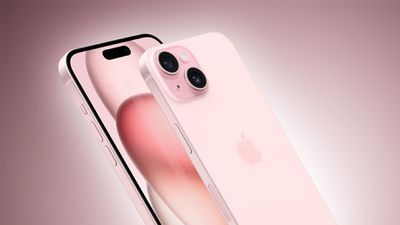
The iPhone 15 and iPhone 15 Plus are Apple's prior-generation flagship devices that are now being sold at a discount. They have older technology and are lacking some of the new features that Apple introduced with the iPhone 16 models, including the Camera Control button, the faster A-series chip, the Action button, and, most importantly, support for Apple Intelligence. The iPhone 15 and iPhone 15 Plus cannot run the new Apple Intelligence features in iOS 18, so only consider Apple's prior-generation iPhones if that is not important to you.
The iPhone 15 models don't look notably different from the iPhone 16 models, except for the color options. Apple did not make major design changes, but the iPhone 15 models do not have a Camera Control button and they have a Ring/Silent switch instead of an Action button. There's also a diagonal rear camera setup that does not offer some of the newer camera capabilities like Photographic Styles for customizing the look of your images or Audio Mix for tweaking the sound in your videos.
While the iPhone 15 and 15 Plus don't support some of the newer software-based camera features, the hardware is largely the same. There's a Main (Wide) lens that supports 1x and 2x zoom, and an Ultra Wide lens. There is no dedicated Telephoto lens.
The iPhone 15 measures in at 6.1 inches, while the iPhone 15 Plus is 6.7 inches. The two devices are essentially identical, with a Dynamic Island for Face ID, aluminum frames, and OLED screen technology. The iPhone 15 and iPhone 15 Plus have an older A16 chip that is two generations behind the newer chips in the current flagship models.
The iPhone 15 models have support for mmWave (U.S. only) and Sub-6GHz 5G and use the X70 Qualcomm chip, one generation behind the Qualcomm chip in the new iPhones. Battery life is a little shorter, but the iPhone 15 models do support MagSafe and USB-C. There is no support for the faster 25W MagSafe charging, though, with the iPhone 15 models limited to 15W MagSafe charging.
Between the iPhone 15 and 15 Plus, the features are identical with the exception of screen size and battery, as the iPhone 15 Plus can accommodate a larger battery size.
Key Features:
- Diagonal dual-lens camera: Main (Wide), Ultra Wide
- Crash Detection
- USB-C port
- Dynamic Island
- 5G support
- A16 chip
Bottom Line: The iPhone 15 and 15 Plus are solid devices that will perform well at an affordable price, but keep in mind that the iPhone 16 is such a notable upgrade that it may be worth paying $100 more for the iPhone 16 this year. The iPhone 15 models do not have an Action button or a Camera Control button, and they cannot run the Apple Intelligence features in iOS 18, so you'd be missing out on the more capable Siri, customizable emoji, Writing Tools, and other Apple Intelligence functions. A prior-generation iPhone is usually a good way to save money, but this year, we don't recommend it.
Frequently Asked Questions

There's no one single iPhone that's best for everyone, and picking the right smartphone needs to take into account factors like budget, desired battery life, preferred feature set, and more.
If you want the absolute best photographic capabilities for example, you're going to want the iPhone 16 Pro or iPhone 16 Pro Max, and if you want something that has a solid feature set at a great price, the iPhone 16e is what you'll want to look at.
Below, we've outlined some of the best iPhone choices based on different scenarios or features that you might be looking for.
Which iPhone Has the Best Battery Life?
With the efficient A18 Pro chip, the iPhone 16 Pro Max has the longest battery life for any iPhone to date at up to 33 hours when watching videos. The iPhone 16 Pro and iPhone 16 Plus are second and will last up to 27 hours when watching videos. The iPhone 16e lasts for up to 26 hours when watching videos, and it is the smallest of the bunch at 6.1 inches.
Which iPhone Has the Best Camera?
With their updated triple-lens camera systems, 48-megapixel Fusion lens, 5x Telephoto lens, 48-megapixel Ultra Wide lens, and LiDAR Scanners, the iPhone 16 Pro and iPhone 16 Pro Max have the best iPhone cameras that you can get. Both of the new iPhones include a three-lens camera system with the same feature set. This year, the Ultra Wide lens has been upgraded to 48 megapixels, allowing for more detailed wide-angle and macro shots.
The Fusion lens supports 24-megapixel and 48-megapixel high-resolution photos through the Photonic Engine, and the Ultra Wide lens supports 12-megapixel images that have the detail from the combined pixels of the 48-megapixel resolution. Using computational photography, the Fusion camera can be set to 24mm, 28mm, and 35mm focal lengths to better mirror what's possible with DSLRs.
All four iPhone 16 models have a new Camera Control button that makes it easier to capture a photo or a video with just a couple of button presses, and the Camera Control button is also capacitive and pressure sensitive so it can be used for changing photography modes and adjusting settings, which makes your iPhone feel more like a camera.
Which iPhone Has Touch ID?
Unfortunately, none of Apple's iPhones have Touch ID. It has been phased out, and Face ID is the only option.
Which iPhone is Best For One-Handed Use?
The iPhone 16 and the iPhone 16e both measure in at 6.1 inches, and they are the smallest iPhones that Apple makes. They won't work for one-handed use for everyone, but they are a better option than the 16 Plus and 16 Pro Max.
Which iPhone is the Best Value?
With Apple Intelligence support, a 48-megapixel camera, OLED display, and 5G connectivity for $599, the iPhone 16e is the best deal that Apple offers. If you need faster mmWave 5G speeds, Wi-Fi 7 connectivity, MagSafe, and an Ultra Wide camera, the $799 iPhone 16 is the upgrade option.
If you don't need the latest bells and whistles like Apple Intelligence and don't mind losing out on a bit of performance and battery life, the iPhone 15 and 15 Plus, which are $100 cheaper than than their iPhone 16 counterparts, could be worth considering.
For many people, the iPhone 16 and iPhone 16e are the iPhones to get this year with their lower price point and modern feature set.
Which iPhone Has the Most Features?
If you want the iPhone with the most bells and whistles, that's the iPhone 16 Pro and iPhone 16 Pro Max. These iPhones offer OLED displays, triple-lens cameras, glass bodies with titanium steel frames, larger maximum storage capacities, and longer battery life.
Compared to the iPhone 16 models, the iPhone 16 Pro and Pro Max have better camera capabilities. The absolute best would be the iPhone 16 Pro Max because of its larger display and bigger battery.
In More Detail
Still not sure? We have deeper dives comparing the iPhone 16 models to each other and to the prior-generation iPhone models, and the standard iPhone 16 to the Pro.
- iPhone 16 vs. iPhone 16 Pro Buyer's Guide: All Differences Compared
- iPhone 15 vs. iPhone 16 Buyer's Guide: 30+ Upgrades Compared
- iPhone 15 Pro vs. iPhone 16 Pro Buyer's Guide: 45+ Upgrades Compared
- iPhone 15 vs. iPhone 16e Buyer's Guide: 25+ Differences Compared
- iPhone 16e vs. iPhone 16 Buyer's Guide: 25+ Differences Compared
For full details on each phone, explore our roundups:
Upcoming iPhone Rumors
Apple is working on new iPhone 17 models that will come out in the fall of 2025. This lineup will do away with the "Plus" iPhone, with Apple instead planning to release an "Air" or "Slim" model that is thinner and more expensive. It will be sold alongside the standard iPhone 17, the iPhone 17 Pro, and the iPhone 17 Pro Max. For more information, check out our roundups:
Guide Feedback
Have questions about choosing an iPhone, notice something we left out, or want to offer feedback on this guide? Send us an email here.


